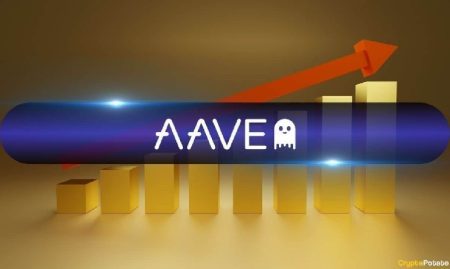Bitcoin Climbs Amid Economic Uncertainty as Federal Reserve Decision Looms
Market Resilience: Bitcoin Pushes Higher Despite Mixed Economic Signals
Bitcoin has demonstrated remarkable resilience over the past week, climbing approximately 4% to reach beyond $116,000 on Friday, continuing its upward trajectory despite—or perhaps because of—troubling economic indicators in the United States. This price movement comes at a critical juncture as markets eagerly anticipate the Federal Reserve’s interest rate decision scheduled for Wednesday, with mounting evidence suggesting that rate cuts may be imminent.
The cryptocurrency’s strength amid economic uncertainty underscores its evolving role in global financial markets. As traditional economic indicators flash warning signs, Bitcoin’s performance challenges conventional market wisdom by thriving during a period when the broader economy appears to be losing momentum. This dichotomy presents a fascinating narrative: what’s potentially detrimental for the overall economy may actually benefit digital assets and other risk-oriented investments as monetary policy shifts to accommodate economic realities.
“The recent price action remains constructive,” notes market analysts tracking Bitcoin’s technical indicators. The formation of higher lows from September’s $107,500 bottom indicates sustained buying pressure, while the 200-day moving average has climbed to $102,083, establishing a solid foundation for further growth. Additionally, the Short-Term Holder Realized Price—a metric frequently referenced as support during bull markets—has reached an unprecedented $109,668, suggesting that newer market participants are maintaining their positions despite volatility.
Economic Data Points to Federal Reserve Rate Cut Potential
A cascade of concerning economic data released last week has significantly strengthened the case for the Federal Reserve to implement interest rate cuts. Thursday’s Consumer Price Index (CPI) figures came in slightly higher than anticipated, indicating that inflation may be more persistent than previously thought. This revelation followed Tuesday’s substantial downward revisions to job data, which showed that the U.S. economy created nearly one million fewer jobs than initially reported in the year ending March—the largest negative revision in American history.
The employment situation appears increasingly precarious. August’s monthly jobs report revealed that the U.S. added a mere 22,000 jobs, while unemployment rose to 4.3%. Further compounding concerns, initial jobless claims jumped by 27,000 to reach 263,000—the highest level since October 2021. These statistics paint a troubling picture of an economy potentially facing the dual challenges of persistent inflation and weakening employment—a combination that has revived discussions about stagflation among economic commentators.
The CME’s FedWatch tool indicates that traders are now pricing in a 25 basis-point interest rate cut in September, with expectations for a total of three cuts before year-end. This anticipated pivot in monetary policy has already begun to influence broader markets, as evidenced by the 10-year U.S. Treasury yield briefly dipping below 4% last week—a psychological threshold that often signals changing market sentiment. However, the dollar index (DXY) continues to hold at multiyear support levels, representing a potential inflection point that market participants should closely monitor as monetary policy evolves.
Bitcoin and Equity Markets Rise on Rate Cut Expectations
Despite the gloomy economic outlook, Bitcoin and major equity indices have responded positively to the prospect of easier monetary policy. The S&P 500 index closed at record highs for two consecutive days last week, demonstrating that traditional risk assets are benefiting from the same sentiment driving Bitcoin’s appreciation. This parallel movement reinforces the growing correlation between cryptocurrency markets and traditional financial systems, particularly during periods of significant macroeconomic shifts.
Bitcoin’s climb toward $116,000 nearly closed the CME futures gap at $117,300 from August, suggesting that technical factors continue to influence price movement alongside macroeconomic considerations. Market analysts note that in periods of economic uncertainty, particularly when central banks signal a shift toward accommodative monetary policy, assets positioned away from traditional fiat currencies often experience increased demand as investors seek alternatives to potentially devaluing currencies.
“When interest rates begin to fall, the opportunity cost of holding non-yielding assets like Bitcoin decreases,” explains financial strategists monitoring the intersection of monetary policy and digital asset markets. “Additionally, the prospect of increased liquidity in the financial system tends to boost risk appetite, directing capital flow toward assets with higher growth potential but also higher volatility profiles.” This dynamic helps explain why Bitcoin and equities can simultaneously rally despite concerning economic data—both asset classes benefit from the anticipated policy response rather than the economic conditions themselves.
Bitcoin-Linked Stocks Show Mixed Performance
While Bitcoin itself has shown impressive strength, companies with significant Bitcoin exposure have delivered mixed results for investors. Strategy (MSTR), the largest of the Bitcoin treasury companies, remained essentially flat for the week despite Bitcoin’s gains. The company continues to underperform Bitcoin year-to-date and trades below its 200-day moving average of $355. At Thursday’s close of $326, the stock was testing a critical long-term support level previously established in September 2024 and April 2025.
Strategy’s modified net asset value (mNAV) premium has compressed to below 1.5x when accounting for outstanding convertible debt and preferred stock, or approximately 1.3x based solely on equity value. The company’s preferred stock issuance has remained subdued, with only $17 million tapped across STRK and STRF products last week, indicating that most at-the-money issuance continues to flow through common shares. According to company announcements, options are now listed and trading for all four perpetual preferred stocks, potentially offering additional yield opportunities for investors seeking income from dividend payments.
Other Bitcoin-linked equities showed more positive performance: MARA Holdings (MARA) gained approximately 7% for the week, while XXI (CEP) advanced by 4%. This divergence in performance suggests that investors are becoming more discerning about the specific business models and capital structures of companies with Bitcoin exposure, rather than treating them as uniform proxies for the cryptocurrency itself. As the sector matures, factors such as Bitcoin acquisition strategy, operational efficiency, and balance sheet management appear to be playing increasingly important roles in differentiating these stocks in investors’ portfolios.
Investment Outlook: Potential Catalysts and Watching Points
As markets anticipate the Federal Reserve’s decision, several key indicators suggest a potential shift in investment sentiment that could benefit both cryptocurrencies and growth-oriented equities. The expected rate cuts, combined with the 10-year Treasury yield’s movement below 4%, indicate that capital may increasingly flow toward assets positioned to benefit from lower interest rates and expanded liquidity. This environment traditionally favors growth investments, potentially creating a favorable backdrop for both Bitcoin and related equities in the coming months.
However, prudent investors should remain attentive to several potential inflection points. The dollar index’s continued resilience at multiyear support levels could signal limits to how much additional monetary easing might occur. Should the dollar strengthen despite rate cuts, this could create headwinds for Bitcoin’s dollar-denominated price. Additionally, if economic data continues to deteriorate beyond expectations, concerns about a deeper recession might eventually override the positive effects of monetary easing, potentially dampening risk appetite across all asset classes.
Technical analysts point to Bitcoin’s price chart as maintaining constructive formation, but the cryptocurrency faces potential resistance as it approaches the August futures gap at $117,300. Breaking convincingly above this level could open the path to new all-time highs, while failure to surpass it might result in consolidation or a moderate pullback. For Bitcoin-linked equities, particularly Strategy (MSTR), the current test of long-term support represents a critical juncture that could determine performance through the remainder of the year as investors evaluate both the company’s execution and the broader digital asset ecosystem against the evolving macroeconomic backdrop.














